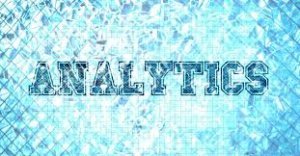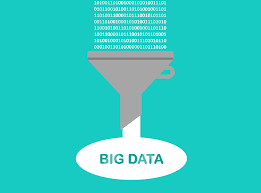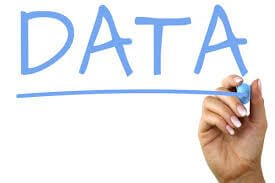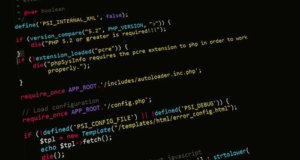The post What is the structure of Big Data? appeared first on Magnimind Academy.
]]>When it comes to the structure of big data, you can consider it a collection of data values, the relationships between them together with the operations or functions which can be applied to that data.
These days, lots of resources (social media platforms being the number one) have become available to companies from where they can capture massive amounts of data. Now, this captured data is used by enterprises to develop a better understanding and closer relationships with their target customers. It’s important to understand that every new customer action essentially creates a more complete picture of the customer, helping organizations achieve a more detailed understanding of their ideal customers. Therefore, it can be easily imagined why companies across the globe are striving to leverage big data. Put simply, big data comes with the potential that can redefine a business, and organizations, which succeed in analyzing big data effectively, stand a huge chance to become global leaders in the business domain.
Structures of big data
![]()
Big data structures can be divided into three categories – structured, unstructured, and semi-structured. Let’s have a look at them in detail.
1- Structured data
![]()
It’s the data which follows a pre-defined format and thus, is straightforward to analyze. It conforms to a tabular format together with relationships between different rows and columns. You can think of SQL databases as a common example. Structured data relies on how data could be stored, processed, as well as, accessed. It’s considered the most “traditional” type of data storage.
2- Unstructured data
![]()
This type of big data comes with unknown form and cannot be stored in traditional ways and cannot be analyzed unless it’s transformed into a structured format. You can think of multimedia content like audios, videos, images as examples of unstructured data. It’s important to understand that these days, unstructured data is growing faster than other types of big data.
3- Semi-structured data
![]()
It’s a type of big data that doesn’t conform with a formal structure of data models. But it comes with some kinds of organizational tags or other markers that help to separate semantic elements, as well as, enforce hierarchies of fields and records within that data. You can think of JSON documents or XML files as this type of big data. The reason behind the existence of this category is semi-structured data is significantly easier to analyze than unstructured data. A significant number of big data solutions and tools come with the ability of reading and processing XML files or JASON documents, reducing the complexity of the analyzing process.
Conclusion

While data analytics aren’t new, the emergence of big data has dramatically changed the nature of work. It’s important for businesses looking to make most out of the big data to try to adopt advanced tools and technologies to keep up with the pace at which the data is growing.
. . .
To learn more about big data, click here and read our another article.
The post What is the structure of Big Data? appeared first on Magnimind Academy.
]]>The post What are the advantages and disadvantages of big data? appeared first on Magnimind Academy.
]]>Key advantages of big data
![]()
Here’re the biggest advantages of using big data.
- Improved business processes: Probably the biggest advantage of big data is it helps businesses to gain a huge competitive advantage. Apart from being able to understand, as well as, target customers better, analyzing big data can result in the improvement and optimization of certain facets of business operations. For instance, by mining big data retailers can not only explore patterns in consumption and production but can also promote better inventory management, improve the supply chain, optimize distribution channels, among others.
- Fraud detection: This advantage of using big data comes from the implementation of machine learning technologies. It helps banks and other financial institutions to detect frauds like fraudulent purchases with credit cards often before even the cardholder gets to know about it.
- Improved customer service: One of the most common goals among big data analytics programs is improving customer service. Today’s businesses capture a huge amount of information from different sources like customer relationship management (CRM) systems, social media together with other points of customer contact. By analyzing this massive amount of information they get to know about the tastes and preferences of a user. And with the help of the big data technologies, they become able to create experiences which are more responsive, personal, and accurate than ever before.
Key disadvantages of big data
![]()
Despite the advantages of big data, it comes with some serious challenges that make its implementation difficult or risky. Here’re the biggest disadvantages.
- Privacy and security concerns: Probably the biggest disadvantage of big data is that it can make businesses a softer target for cyberattackers. Even giant businesses have experienced instances of massive data breaches. However, with the implementation of GDPR, businesses are increasingly trying to invest in processes, protocols, and infrastructure to be able to maintain big data
- Need for technical expertise: Working with big data needs a great deal of technical proficiency and that’s one of the key reasons for which big data experts and data scientists belong to the highly paid and highly coveted group in the IT landscape. Training existing staff or hiring experts to handle big data can easily increase the cost of a business considerably.
Final Takeaway

Despite the advantages and disadvantages of big data we discussed here, it just cannot be denied that data powers almost everything these days and businesses have only started to scratch the surface of the possibilities. While in the future, the complexity might be higher, but we can surely hope to see more advanced big data operations to sail through the challenges.
. . .
To learn more about big data, click here and read our another article.
The post What are the advantages and disadvantages of big data? appeared first on Magnimind Academy.
]]>The post What are real-life examples of the application of Big Data Analytics? appeared first on Magnimind Academy.
]]>While the concept of big data has been around for a significant number of years, everything has started to change with the emergence of big data analytics. This process allows businesses to perform analytical procedures efficiently and quickly, giving them a competitive advantage over competitors. Here’re some of the most prominent real-world examples of how big data analytics is being used.
1- Healthcare industry
![]()
The entire healthcare industry is getting transformed with the help of big data analytics. The ability to provide hyper-personalized patient treatment, improve the quality of life of the patients, as well as, discover medical breakthroughs – all have been impacted by big data analytics. In this industry, big data analytics isn’t performed with the focus of finding new product opportunities or increasing profits. Instead, it’s all about applying and analyzing big data to offer a better patient-centric approach. For instance, healthcare providers are analyzing historical big data to analyze and identify certain risk factors in patients, which is extremely useful for early detection of diseases, enabling both the patients and doctors to take action sooner.
2- Retail industry
![]()
Probably the maximum implementation of big data analytics can be observed in the retail industry. As the industry has gone digital, the customers have also started to expect a better and seamless experience. With the help of big data analytics, retail companies have become in a position to understand their customers more and thus, to provide a variety of personalized services. From creating product recommendations based on a customer’s past searches to demand forecasting to performing crisis control – everything is being taken care of through big data analytics.
3- Media and entertainment industry
![]()
The media and entertainment industry is one of the biggest users of big data analytics. As the number of users of different digital gadgets is increasing rapidly, media and entertainment companies are leveraging the power of big data analytics to a great extent. Some of the biggest benefits that are being experienced by the industry include on-demand or optimized scheduling of media streams, getting actionable insights from customer reviews, predicting the actual interests of audiences, successful targeting of the advertisements, and many more.
Final Thoughts

For any business, big data analytics is a crucial investment that can help to optimize the real-life situations where common people are involved to a great extent. Implementation of big data analytics not only helps businesses to achieve competitive advantage but also drives customer retention and reduces the cost of operation. And as technological advancements steadily continue to emerge, big data analytics will become even more important to businesses across industries.
. . .
To learn more about data science, click here and read our another article.
The post What are real-life examples of the application of Big Data Analytics? appeared first on Magnimind Academy.
]]>The post What are Big data analytics tools and what are the advantages of these? appeared first on Magnimind Academy.
]]>It’s important to understand that big data is of no use without the analysis of the captured information and making sense of this data falls under the domain of big data analytics tools that offer different capabilities for businesses to obtain competitive value. Big data analytics is a collection of different processes which are related to business, data scientists, production teams, business management, among others.
There’re several big data analytics tools are being utilized for big data analytics model. We’ve created this post to give you an overview of some of the most popular big data analytics tools, how they work, and why they have gained popularity.
Before delving deeper, let’s have a quick look at some features and characteristics that any big data analytics tool must contain.
1- Fundamental features of big data analytics tools
![]()
- Analytic capabilities: Different big data analytics tools come with different types of analytic capabilities like decision trees, predictive mining, neural networks, time series etc.
- Integration: Sometimes additional programming languages and statistical tools are required by businesses to conduct different forms of custom analysis. So, it’s required for big data analytics tools to come equipped with it.
- Scalability: Data wouldn’t be the same always and will grow as a business grows. With the scalability feature of big data analytics tools, it’s always effortless to scale-up as soon as the business captures new data.
- Version control: The majority of the big data analytics tools get involved in the adjustment of the parameters of data analytics models. Version control feature helps to improve the capabilities to track changes.
- Identity management: Identity management is a required feature for all effective big data analytics tools. They should be able to access all the systems and all related information which may be associated with the computer software, hardware, or any other individual computer.
- Security features: Data security should be paramount for any successful business. The big data analytics tools that are used should come with safety and security features to safeguard the collected data. In addition, data encryption is an imperative feature which should be offered by big data analytics tools.
- Visualization: This feature of big data analytics tools enables professionals to display the data in a graphical format, making it more useable.
- Collaboration: Though analysis can be a solitary exercise sometimes, it frequently involves collaboration and thus, this feature is required.
You can always go out and purchase big data analytics tools in order to cater to the needs of your business. But all big data analytics tools aren’t created equal and some may not be efficient in dealing with the task for which you’re buying it. In addition, buying additional tools beyond your business’s existing analytics and business intelligence applications may not be necessary based on the particular business goals of a project.
In this post, we’re going to take a closer look at some of the most popular big data analytics tools to help you make an informed purchase decision. Just ensure that the tool you select comes with all of the features mentioned above together with other ones that may be required to support your business results and organizational decision-making teams as well.
2- Popular big data analytics tools
![]()
Here’re some of the widely used big data analytics tools together with their key advantages.
2.1- Apache Hadoop
![]()
It’s a software framework employed for the handling of big data and clustered file system. This open-source framework offers cross-platform support and is being used by some of the giant tech companies including Microsoft, IBM, Facebook, Intel etc.
Advantages:
- Highly scalable
- Offers quick access to data
- Presence of Hadoop Distributed File System (HDFS) that comes with the ability to hold every type of data
- Highly effective for R&D purposes
2.2- Tableau Public
![]()
This intuitive and simple tool offers valuable insights through data visualization. A hypothesis can be investigated with the help of Tableau Public. You can embed visualizations published to this tool into blogs and share web pages through social media or email.
Advantages:
- Enables free publishing of visualizations to the web
- No programming skills required
2.3- Google Fusion Tables
![]()
When it comes to big data analytics tools, Google Fusion Tables is a cooler version of Google Spreadsheets. You can use this excellent tool for data analysis, large dataset visualization etc. In addition, you can add Google Fusion Tables to your business analysis tools list.
Advantages:
- Lets you visualize larger table data online
- Lets you summarize and filter across a huge number of rows
- Enables you to create a map in minutes
2.4- Storm
![]()
It’s an open-source and free big data computation system. It comes with distributed stream processing, fault-tolerant, real-time processing system together with real-time computation capabilities.
Advantages:
- Guarantees the processing of data
- Reliable at scale
- Very fast and fault-tolerant
2.5- RapidMiner
![]()
It’s a cross-platform that comes with an integrated environment for predictive analysis, data science, and machine learning. It comes under different licenses and the free version allows for up to 10,000 data rows and 1 logical processor.
Advantages:
- The effectiveness of front-line data science algorithms and tools
- Integrates well with the cloud and APIs
- The convenience of code-optional GUI
2.6- Qubole
![]()
This all-inclusive, independent big data platform manages, learns, as well as, optimizes on its own from the usage. It enables the data team to focus on business outcomes rather than managing the platform.
Advantages:
- Increased flexibility and scale
- Faster time to value
- Optimized spending
- Easy to use
2.7- NodeXL
![]()
It’s one of the best big data analytics tools available in the market. This open-source software offers exact calculations and comes with advanced network metrics.
Advantages:
- Graph visualization
- Graph analysis
- Data import
2.8- Apache SAMOA
![]()
SAMOA or Scalable Advanced Massive Online Analysis is an open-source platform for machine learning and big data stream mining. With this, you can create distributed streaming ML algorithms and have them run on multiple DSPEs.
Advantages:
- True real-time streaming
- Fast and scalable
- Simple to use
2.9- Lumify
![]()
This free and open-source tool lets you perform big data fusion/integration, visualization, and analytics. Some of its primary features are 2D and 3D graph visualizations, full-text search, integration with mapping systems, automatic layouts, among others.
Advantages:
- Scalable and secure
- Supported by a dedicated and full-time development team
- Supports the cloud-based environment
2.10- MongoDB
![]()
It’s a NoSQL database written in JavaScript, C, and C++. It comes with features like Aggregation, Indexing, Replication, MMS (MongoDB management service), file storage, load balancing, among others.
Advantages:
- Reliable and low cost
- Easy to learn
- Offers support for multiple platforms and technologies
2.11- Datawrapper
![]()
It’s one of the big data analytics tools that are used by newsrooms throughout the world. This open-source platform enables its users to quickly generate precise, simple, and embeddable charts.
Advantages:
- Works very well on every type of device
- Fast and interactive
- Fully responsive
- No coding is required
Closing Thoughts
![]()
Big data analytics tools have become imperative for large-scale industries and enterprise because of the massive volume of data they need to manage on a regular basis. These tools help businesses save a significant amount of resources and in obtaining valuable insights to make informed business decisions. As big data analytics refers to the complete process of capturing, organizing, and analyzing massive sets of data, the process requires very high-performance analytics. In order to be able to analyze such massive volumes of data, specialized software like big data analytics tools are must.
In the present situation, the volume of data is steadily increasing along with the technology growth and world population growth. This is a clear indication of the immense necessity of having big data analytics tools for businesses to leverage the power of that data. These tools are being heavily used in some of the most widespread sectors including travel and hospitality, retail, healthcare, government, among others.
With huge investments and interests in big data technologies, professionals with big data analytics skills are in high demand. For those looking to step into this field, probably this is the best time to get some certifications to showcase their skills and talent. It’s important to note that the domains of the big data landscape are quite different and so does their requirement. Since data analytics is the emerging one in every field, the need for trained professionals with adequate knowledge is naturally huge as well.
. . .
To learn more about data science, click here and read our another article.
The post What are Big data analytics tools and what are the advantages of these? appeared first on Magnimind Academy.
]]>The post Will you be a part of future big data analytics? appeared first on Magnimind Academy.
]]>1- What is big data analytics?

Put simply, big data analytics refers to the process of extracting valuable information by analyzing different kinds of big datasets. It’s used to uncover hidden patterns, consumer preferences, market trends etc in order to help organizations in decision making.
There’s a massive amount of data available today and there’s an urgent need to capture, analyze and preserve that data for getting actionable insights out of it. By looking at the data available to a business, it can determine different ways to make good strides to attain positive results.
Today, every company, from small businesses to giant multinationals, has become dependent on data. Now, just think for a moment, what if you could be the person businesses turn to before making any business decisions? This is exactly the place that future big data analytics will hold for you.
2- Why should you learn big data analytics?

If you’re still not convinced enough by the above example, here’re the reasons you should try to become a part of the future big data analytics.
2.1- Huge job opportunities

As organizations begin to realize they cannot make use of big data in terms of capturing, interpreting and using that data, they’ve started to look for professionals who’re capable of doing so. Just have a look at any major job portal and you’ll find that there’re lots of job postings by companies looking for data analysts. This number will eventually continue to increase as data will become more abundant and the number of professionals with skillsets needed for the job will remain low. So, now is the time to get prepared to become a part of future big data analytics.
2.2- Data analytics is and will be a priority for top companies

To remain competitive in the business landscape, top companies are looking to implement data analytics to explore new market opportunities for their products and services. Today, a huge percentage of major companies consider data analytics as a crucial component of their business performance and a key approach to rise above the competition and this will become even more important with competition increasing over time. It means today’s aspiring big data professionals will be able to become an inherent part of future big data analytics.
2.3- Great salary aspects

Across the globe, the demand for big data analytics skill is steadily going up with a massive deficit on the supply side. Despite big data analytics considered as a hot job, there’s a large number of unfilled jobs because of the acute paucity of required skills. The difference between demand and supply is only expected to increase. As a result, wages for professionals with data analytics skills are boosting and companies are ready to offer fattier pay packets for the right people. In some countries, data analytics professionals are getting substantially higher compared to their peers in other IT-based professions. This monetary benefit can surely be considered as a great reason to become a big data analytics professional.
2.4- Big data analytics is increasingly getting adopted by organizations

New technologies in the field are making it easier to perform sophisticated data analytics tasks on diverse and massive datasets. A lot of professionals are using advanced data analytics techniques and tools to perform tasks like data mining, predictive analytics, among others. With big data analytics offering businesses an edge over the competition, companies are implementing a diverse range of analytics tools increasingly. Today, it’s almost impossible to find a top brand that doesn’t take help of at least some form of data analytics. In light of the increasing adoption rate of data analytics, it can be said that the landscape of future big data analytics will hold a good place for skilled professionals.
2.5- You’ll be a part of the core decision making

For the majority of the companies, big data analytics is a major competitive resource. There’s no doubt that analytics will become even more important in the near future as competition will keep on increasing. This is mainly because there’s a massive amount of data which is not being used and only rudimentary analytics is getting done. It’s an undeniable fact that data analytics is and will be playing a crucial role in decision making, regardless of the volume of an organization. Not being able to be a part of the decision-making process is something that generates dissatisfaction for a significant number of employees. As a big data analytics professional, you’ll be a crucial part of business decisions and strategies, catering to a major purpose within the company.
2.6- You’ll have a diverse range of job titles to take your pick from

As a data analytics professional, you’ll have a wide range of job titles as well as domains from which you can choose according to your preference. Since data analytics is used in different fields, lots of job titles like big data engineer, big data analytics architect, big data analyst, big data solution architect, analytics associate, big data analytics business consultant, metrics and analytics specialist etc will be available to you. Also, an array of top organizations like Microsoft, IBM, Oracle, ITrend, Opera are utilizing big data analytics and thus huge job opportunities with them are possible.
2.7- You’ll be able to become a freelance consultant

A vast majority of today’s workforce keeps on looking for ways to diversify their income sources and ways through which they can maintain a perfect work-life balance. Data analytics professionals being able to offer valuable insights about major areas hold the perfect position to become a consultant or freelancer for some of the top companies. So, you don’t need to be tied to a single company. Instead, you’ll be able to work with multiple organizations who’ll depend on your insights when making crucial business decisions.
3- Key skills you should focus on to become a part of future big data analytics

To become successful in the future big data analytics landscape, you need to have the ability to derive useful information from big data. There’re different approaches to learn the key skills needed to become a data analytics professional like self-learning, learning from tutorials etc but we’d suggest you take a course in order to learn from instructors with real-world experience. Let’s have a look at the skills.
3.1- Programming

A big data analytics professional needs to have a solid understanding of coding because a lot of customization is needed to handle the unstructured data. Some of the most used languages in the field include Python, R, Java, SQL, Hive, MATLAB, Scala, among others.
3.2- Frameworks

Familiarity and a good understanding of frameworks like Hadoop, Apache Spark, Apache Storm are needed to become a part of future big data analytics. All these technologies would help you in big data processing to a great extent.
3.3- Data warehousing

Adequate knowledge of data warehousing is a must to become a good data analytics professional. You’ll be expected to possess a good understanding of working with database systems like Oracle, MySQL, HDFS, NoSQL, Cassandra, among others.
3.4- Statistics

While you’ve to have a robust understanding of the technologies used in the field, good knowledge of statistics is also a must for working with big data. Statistics is the building block of data analytics and expertise in core concepts like random variables, probability distribution etc is extremely important if you want to hold a strong position in the future big data analytics landscape.
3.5- Strong business acumen

One of the most crucial skills to become a big data analytics professional is a solid understanding of the business domain. In fact, one of the key reasons behind the huge demand of big data analysts is that it’s highly difficult to find someone with adequate knowledge in statistics, technical skills, and business landscape. There’re professionals who’re expert programmers but don’t have the needed business acumen, and thus may not be the ideal fit for future big data analytics domain.
Final takeaway

The advent of IoT together with the developments in the AI field has simplified implementation of big data analytics to the degree that even small and medium scale businesses can benefit from them. And since almost every sector from banking and securities, education, healthcare to consumer trade, manufacturing, and energy is directly or indirectly making use of data analytics, the importance of it increases even further. As we’re moving toward a more connected future, big data analytics is going to play a major role in the future. With technologies around the world becoming more interoperable and synchronous, data will become the most important avenue that connects them together. So, it can be said that this is the ideal time to start developing the skills and become a master of them to hold a good place in the future big data analytics landscape.
. . .
To learn more about big data, click here and read our another article.
The post Will you be a part of future big data analytics? appeared first on Magnimind Academy.
]]>The post Difference Between Data Science and Big Data Analytics appeared first on Magnimind Academy.
]]>If you’re interested in working with data, it’s extremely important to have a clear understanding of the different avenues related to it. In this post, we’ll discuss the differences between data science and big data analytics. Though these terms are interlinked, there’s a huge difference that lies between them almost in every aspect. Let’s start the discussion.
1- Concept:
Data science

It’s the field that encompasses almost everything related to data – from preparation of data to data cleansing to data analysis, and deals with both structured and unstructured data. Data science can be considered as an umbrella term which includes various scientific methods within its ambit. It combines statistics, mathematics, problem-solving, and much more.
Big data analytics

This field involves the application of mechanical or algorithmic processes in order to derive operational insights for complex business solutions. It’s all about examining raw data to support decision making. Big data analytics involves inspecting, transforming, cleansing and modeling data.
2- Applications:

Applications of data science
- Digital advertisement: Data science algorithms are used by the entire digital marketing domain – from digital billboards to display banners.
- Internet search: Data science algorithms are utilized by search engines to offer the best results for search queries within a fraction of seconds.
- Recommender systems: Here, companies use data science technologies to promote their products as well as recommendations according to the relevance of information and the user’s demands. These systems not only enhance user experience but also make it easier to find relevant products or services from billions of them.
Applications of big data analytics
Big data analytics is used in a diverse range of fields. Some of them include:
- Gaming sector: Here, companies use big data analytics to get insights such as likes, dislikes, relationships of the users etc.
- Healthcare sector: Healthcare service providers use big data analytics to perform tasks like tracking and optimizing patient flow, tracking the use of equipment and medicines in the facilities, organizing patient information, etc.
- Travel sector: Travel companies use big data analytics to optimize buying experiences through different channels. They also get consumer preferences and desires, and find correlation between current sales and subsequent browsing, which let them optimize conversions.
3- Job responsibilities:

Data science professional
Data science professionals perform an exploratory analysis to obtain insights from data. Different kinds of machine learning algorithms are used to identify the occurrence of a specific event in the future. They focus on identifying unknown correlations, hidden patterns, and market trends, among others.
Big data analytics professional
The responsibilities of big data analytics include dealing with a large amount of heterogeneous data captured from different sources and arriving at a high velocity. These professionals describe the behavior and structure of big data solutions and how they can be delivered utilizing big data technologies like Spark, Hadoop etc based on the requirements.
4- Skill sets required:

Data science professional
- To become a data science professional, you should have excellent analytical skills together with excellent data management skills. A large percentage of data science professionals hold a Master’s degree or a Ph.D. degree with exceptional skills in statistics, programming, and mathematics.
- Programming skills required include C/C++, Python, R, SAS, Pearl, Java languages etc.
- Require technical skills include machine learning tools, data mining, data managing skills, unstructured data techniques etc.
- Sound knowledge of database systems together with essential business skills like communication, industry knowledge etc.
Big data analytics professional
- As an aspiring big data analytics professional, you’d need to have a robust understanding of programming languages like R and Python.
- You should have excellent skills in statistics and mathematics.
- Data wrangling skills are also extremely important to map out and convert data into another format.
- Other required skills include data visualization, machine learning skills, and communication skills.
5- Pay packages:

Though both the professionals work in the same domain, the salaries earned by a data science professional and a big data analytics professional vary to a good extent.
The average salary of a data science professional can be around $113, 436 per year, whereas a big data analytics professional can expect to earn around $66,000 per year.
6- The career path:

If you’re new to the field of data, data science and big data analytics may seem something that’s interchangeable, but they’re different in reality and so are their career paths. Let’s have a look at them.
Data science professional
Given the huge amount of data being churned out through different devices throughout the world every day, organizations have become highly interested in gleaning valuable insights from their data collection processes. Here’s the ideal path that you can take to become a data science professional.
- You should get accustomed with the most commonly used programming languages used in the field like R, Python, and Java, and refresh your knowledge in statistics and applied mathematics. It’ll also help to understand whether the role of a data science professional is the right fit for you.
- The most preferred majors in data science are mathematics, statistics, information technologies, computer science etc. Having a good understanding in any or a couple of these fields would help you to stay a step ahead of your competition. You should also continue to learn database architecture, programming languages etc.
- Try to start developing your professional networks by building and nurturing connections with different communities, joining internship opportunities etc.
- There’re many organizations that offer entry-level jobs in data science. Look for positions like Junior Data Scientist or Junior Data Analyst. Try to obtain some system-specific certifications or training in data-related fields (for example data visualization software) as they might help you to get an entry-level job faster.
- If you want to make your career opportunities relatively higher, try to obtain an advanced degree like a Ph.D. degree or a Master’s degree.
If you want to get promoted fast or become a data science professional who’s in high demand, try to obtain additional experience. Remember that businesses value results. So, having leadership and project management experience coupled with strong technical skills will help you get more significant opportunities.
Big data analytics professional
Your key responsibilities will include understanding the insights and trends, which are revealed by the huge datasets. Let’s have a look at how you can become a big data analytics professional.
- Consider studying data analysis or applied statistics together with computer science classes that focus on database management and project management.
- It can be a little difficult to gain direct employment as a big data analytics professional without any experience. So, try to take up internship offers to gain valuable experience together with some relevant training that would facilitate additional skill development.
- Try to get an entry-level job like a statistical assistant to get valuable experience and on-the-job training.
- Consider attending in-house training classes as much as you can, particularly those about big data management and analytical software programs. They’ll help you to get crucial knowledge and experience, which in turn would let you reach the level you desire.
- An advanced degree will bring you more job opportunities and thus, help you proceed further in your career. Businesses want their employees to be familiar with cutting-edge tools and technologies together with having solid knowledge. So, it’s recommended to get a Master’s degree in big data management or data analytics or data science. Also, there’re some online academies that offer valuable certifications that will help you gain valuable real-world experience. And the best part about these certifications is that you can continue studying while maintaining your job.
7- One major thing to remember

Regardless of whether you choose to become a data science professional or a big data analytics professional, you’ve to stay relevant in your domain. In today’s age of continual technological innovation, continuous education has become more crucial than ever. A career-oriented data professional should always be learning and stay on top of the trends of his/her respective industry. So, continue to develop your network and keep on looking for professional and educational development opportunities through conferences, bootcamps etc.
Bottom line

Today, it’s a universal fact that data has become the backbone for almost every industry, in one way or the other. Businesses have moved far from being only focused on their products or services to being data-focused. Even the smallest piece of information these days can bring great value to organizations that can derive a huge amount of insight from it. This has resulted in an exponential increase in the need of professionals who can help the companies accomplish their goals.
The knowledge and insight derived from analyzing data with the help of data science professionals and big data analytics professionals by using the right techniques and tools can help these companies drive product and service innovation. Each of the areas of data science and big data analytics is extremely important to organizations. So, if you’re looking to step into the field of data, you can consider charting your career path for either of these fields based on your preference and abilities.
. . .
To learn more about data science, click here and read our another article.
The post Difference Between Data Science and Big Data Analytics appeared first on Magnimind Academy.
]]>